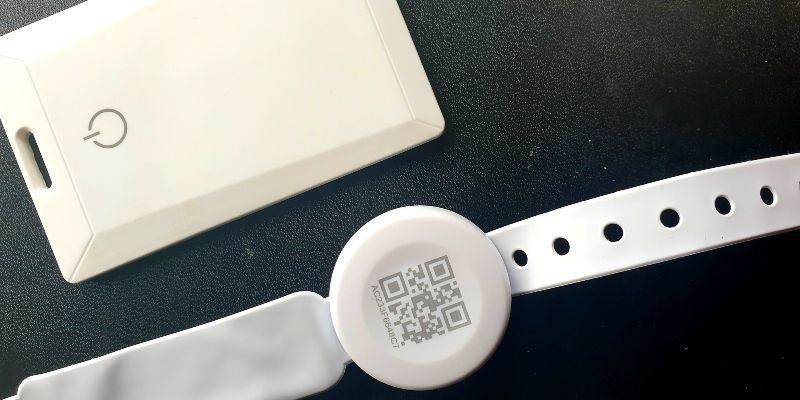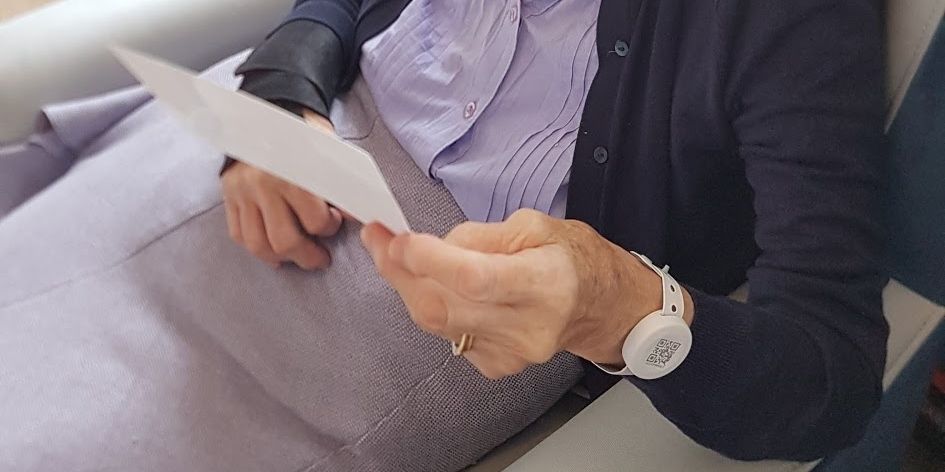
Wearable digital devices are to be trialled in care homes to establish whether the technology can help reduce covid-19 infections and prevent deaths.
Similar in size to a wrist watch, the devices register when wearers come into contact with each other. Residents, staff and visitors in 32 care homes across the country will wear them.
The data is automatically fed to a team of researchers at the University of Leeds, who can analyse it quickly and feed back results to care home leaders. It will identify infection trends, enabling care homes to adapt their procedures to manage infection.
It will be compared to another 32 homes not using the technology to determine whether it is more effective than other contact tracing methods.
The £1.6m CONTACT trial has been funded by the National Institute of Health Research and is run by Leeds’s School of Healthcare, School of Engineering and Institute of Clinical Trials Research, in partnership with the University of Nottingham, data strategy company Microshare Inc, care home providers and local authority public health bodies.
It comes after infection rates of up to 80% and as many as 30,000 deaths were reported in care homes in the first wave of the coronavirus pandemic.
“The ease and simplicity of the device could be game changing.”
Lead researcher Carl Thompson, Professor of Applied Health Research at Leeds’ School of Healthcare, said the devices would allow care homes to better manage the risk of infection and consider reopening to outside visits.
He said: “Contact tracing in care homes often starts and finishes at the front door. NHS Test and Trace or local public health team contact tracing can be difficult, expensive, and often results in homes simply being closed to visitors, and residents’ freedoms restricted.
“The CONTACT trial will test whether wearable digital devices improve contact tracing in care homes, reduces COVID-19 infections and untimely deaths, and provides the possibility of homes opening up to family, community and healthcare professionals.”
Cyd Akrill MBE, Springfield Healthcare Group’s Director of Nursing, said: “This study could significantly improve the quality of life for the people in our care. Safety is of the utmost importance but the ease and simplicity of the device could be game changing for us.
 A care home resident wearing the device on her wrist. Picture: Carl Thompson
A care home resident wearing the device on her wrist. Picture: Carl Thompson
“To have detailed data to inform our infection, prevention and control allows us to make better informed decisions around visiting - improving safety and the quality of lives for the people we support.”
Dr Tom Hall, South Tyneside Council’s Director of Public Health, said: “Care homes continue to be one of the settings worst hit by the COVID-19 pandemic. Interventions that might reduce the risk to residents and staff in care homes are important to understand and evaluate. We hope this trial will provide “real-world” evidence on a tech-based supplement to traditional contact tracing, that ultimately could be beneficial in our local efforts to reduce the impact of COVID-19.”
Further information
Main picture: A close up of the device. (Credit: Carl Thompson)
Inset picture: A care home resident wearing the contact tracing device. (Credit: Carl Thompson)
For further details, contact University of Leeds press officer Lauren Ballinger at L.ballinger@leeds.ac.uk
This study is funded by the National Institute for Health Research (NIHR) [cross-programme COVID-19 Recovery and Learning (NIHR|132197)]. The views expressed are those of the author(s) and not necessarily those of the NIHR or the Department of Health and Social Care.